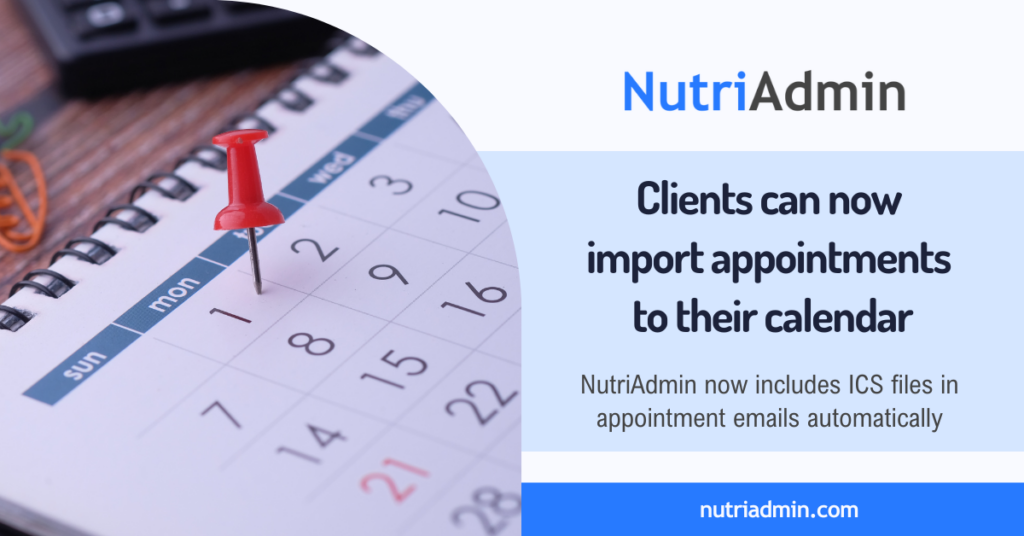If you are a nutritional therapist or health coach, you probably write many reports for your clients each time you have a consultation with them. These may include:
- Supplement recommendations
- Books/Articles to read
- Guidelines on how and what to eat
- etc
The majority of the nutritionists I work with say that these reports are one of the most time consuming tasks in their job. Moreover, nobody pays for this extra time spent working behind the scenes.
Wouldn’t it be great if you could do all those reports faster? Read more to find how, putting the wisdom of Renaissance’s great master Michelangelo.
Creating David
David is a masterpiece of Renaissance sculpture, created by Michelangelo 500 years ago. In case you’ve never seen the statue, here is a picture.
How would you go on to carve a massive brick of marble – David is over 5 meters (17 ft) tall – into one of the most influential pieces of art in history?
David’s creator, Michelangelo, gave a simple answer:
Every block of stone has a statue inside it and it is the task of the sculptor to discover it.
Michelangelo didn’t put together many small stones to create the statue. He started with a big stone, then laboriously removed little pieces until achieving the final result.
Why not follow a similar approach to creating reports? I’m here to argue this methodology can save you considerable time.
Creating reports by subtracting, rather than by adding
Every client is different. As such, every single one of them will require a personalised result. Put simply, you cannot simple recommend Iron supplements to everyone, some people need them, others don’t.
The big challenge with reports, and the reason why they may be time-consuming – even after years of experience – is that every single one of them needs to be unique. Similar to artwork in a sense.
In sculpture, every statue comes from a big piece of stone or marble. Yet, even if the initial stones are identical, you will create different works of art as you sculpt and hammer.
Are you starting every report with a white page? If so, you are crafting reports by adding.
To create a report by subtraction, like to sculpt David, you will need to start with a large block of content, then remove the pieces that are unnecessary until your masterpiece is attained.
Recommending supplements
To illustrate the concept of subtraction, let’s discuss creating a report for supplement recommendations.
Instead of starting with a white page, and listing all supplements you want to recommend to a client, how about starting with a master list of all the supplements you can advice to patients?
You can create a master list with 50 or more supplements. Magnesium, Iron, Zinc, etc. The list could be formatted as a table, and include dosage information, trusted brands, or tips for consumption.
You would start your report for any client with the master list. Then, you would remove all the supplements that do not apply to this person. The end result: the desired report.
This approach has many advantages:
- Deleting from a master document is much easier than writing from a blank page every time
- You only do all the tedious text formatting once
- You spell-check and correct mistakes once, then you’re confident the information you’re giving away is good
- You can write reports in half the time. In fact, it’s not even writing, it’s pointing and clicking.
How much time would it take you to go through a list of 50 supplements, and delete the ones that do not apply to your last client – leaving the ones that do? Probably not much.
Note: You delete only from a copy of the original master document. Copying in a computer is instantaneous and free, as opposed to duplicating tons of marble in a workshop.
Writing recommended reading lists
Same idea here. It’s hard to come up with the right articles, books, or documentaries you would like to give to your client in a handout. Specially if you have to do this on the spot.
How about crafting a master list of learning resources? You can then copy the list, and delete resources that do not apply to a particular client.
Your master list may be several pages long, perhaps divided into sections. Sections could be:
- For children
- Specific for men
- Specific for women
- Specific for diabetes patients
- Specific for losing weight
- etc
If you have an adult man that wants to lose weight for example, you can remove many of the sections above entirely, without even thinking, and hand in a report with very relevant content that took you 30 seconds to produce.
Going even further with templates
Ok, not all is subtraction. What if you wanted to sculpt a statue, but then thought about giving it some colour?
If you wanted a colourful statue, it wouldn’t be enough with a big piece of marble. You would need to first sculpt the statue, then add some painting.
Likewise, you may end with a meaningful report after removing pieces, but perhaps some content is missing. This could be linking paragraphs between sections for example.
You may be tempted to write manually all of the missing interconnecting parts in your reports, but there is a better way: leveraging templates.
How about creating a collection of many small pieces of content – templates – that can be re-used across your reports by copy/pasting them?
For example. You could write a paragraph explaining the importance of omega 3, natural sources, etc. This particular paragraph would be useful to a client that needs more omega 3, but probably not necessary for the rest.
Instead of writing the same paragraph over and over to every client that needs more omega 3, wouldn’t it be great to have it saved somewhere, where you can just retrieve it whenever it’s needed?
Thinking bigger, imagine having the right thing to write – let’s say 90% of the time. You would be storing a couple of dozen templates with common content you write often. This way, you’d only have to improvise 10% of the time.
The advantages of this system are enormous:
- Never writing the same thing twice (over years of practicing)
- Never formatting text, tables, fonts, colours, etc
- Never having to think hard, and improvise every single report every time
- Writing everything much faster
The main disadvantage of the system is spending some initial time to set it up, plus getting used to it. However, this is a long term investment. If you work in nutrition you know it may take someone some time and effort to get used to a new diet, but it pays off long-term!
Conclusion
Michelangelo is long gone, but his legacy remains. This not only refers to his art masterpieces, but to his inspiring power.
Start creating reports by subtracting today, give it a go and see if it is faster. Add those templates for extra efficiency and you will soon wonder how you were able to live before without these tools.
School and university usually teach us to add stuff. To start with blank pages, and fill them in with our thoughts. However, there are many ways to do things. Furthermore, often the most common way is not the best.
Writing reports is just one of the many applications of the art of subtracting. Another one is software development – my own job involves writing a lot of software.
I used to start every project and every task from a blank page – and it was extremely frustrating to write common components over and over. Since I’ve adopted the style of templates and re-using parts of my work, it has all gone much more smoothly. You can do the same with nutrition reports!
Finally, there are many ways in which you can go about implementing the strategies described in this post. One such way would be to construct your own system, by using Office, Spreadsheets, and other software tools.
Many people like to build their own systems. This provides full control, though it may be very time consuming.
If you’d like to use a system based on the principles of this article that has already been designed to suit the needs of nutritionists and dietitians, how about giving NutriAdmin a go?
We developed a reporting functionality in NutriAdmin so that you would never have to write the same content twice. You can watch a short video demonstrating how it works by clicking here.
Hope you found this article interesting. Please consider subscribing in the yellow box below to get more articles like this one in your inbox from time to time.
If you want to learn more about productivity, you can read our productivity machine article.
Thanks for reading and have a nice day.




